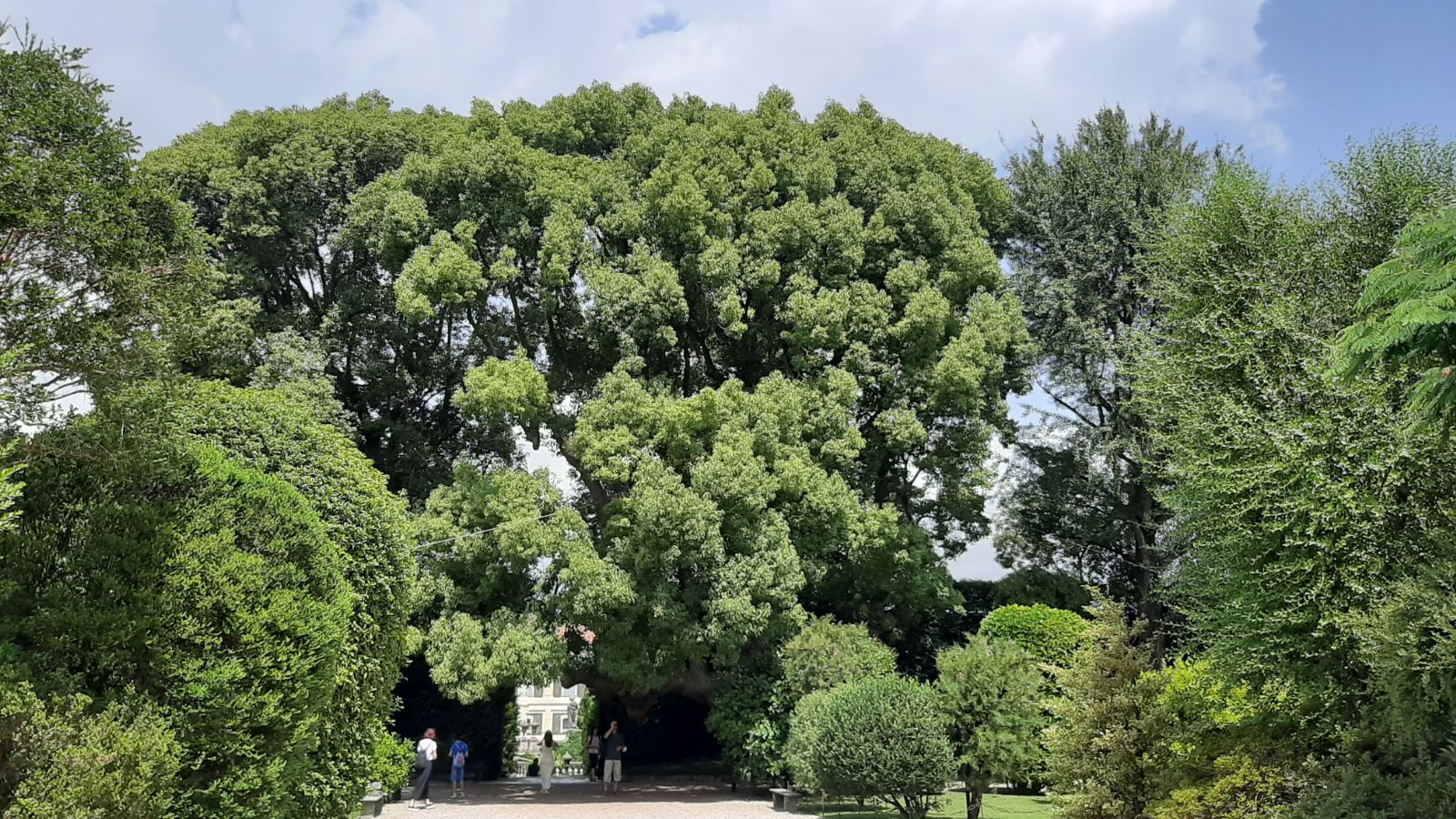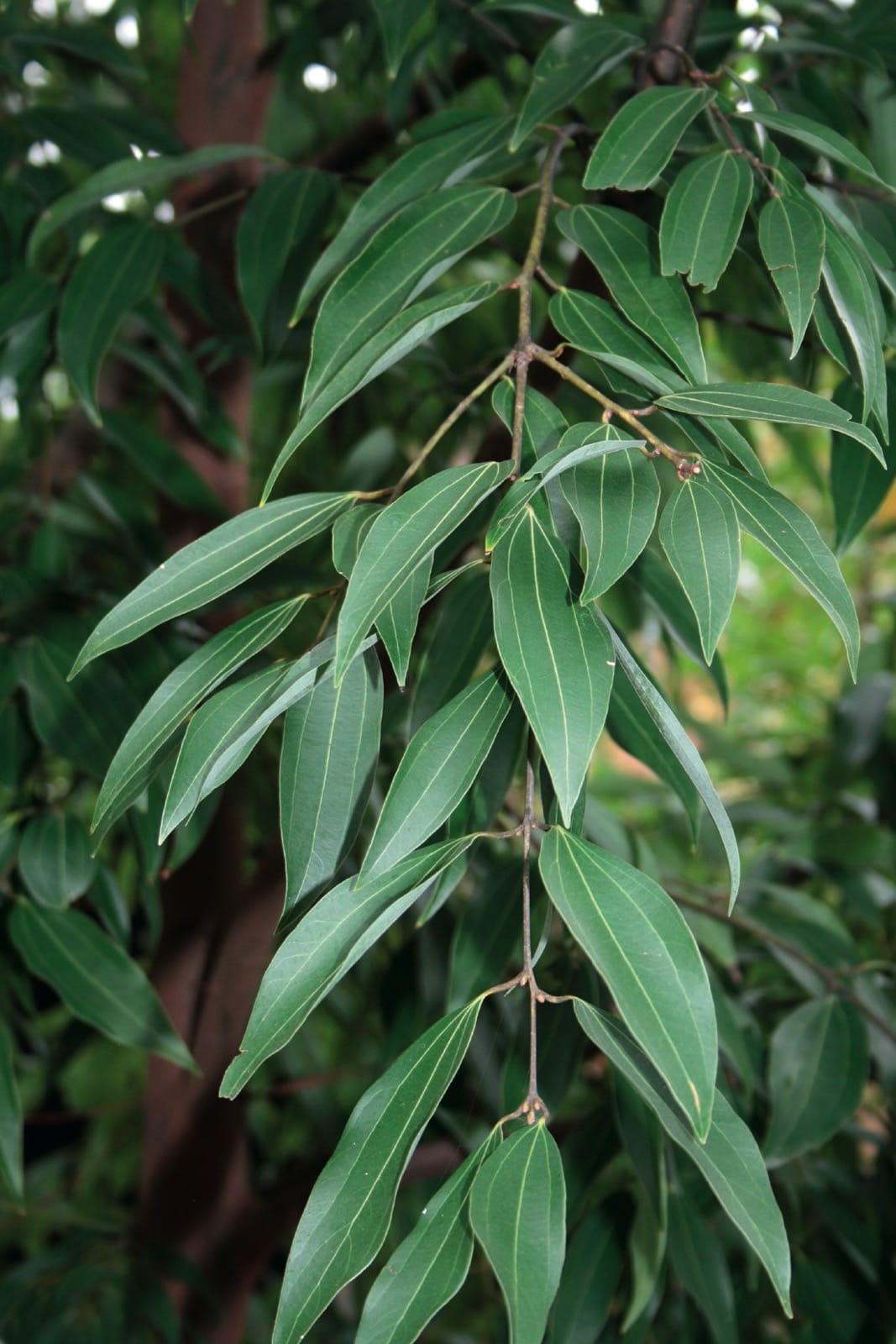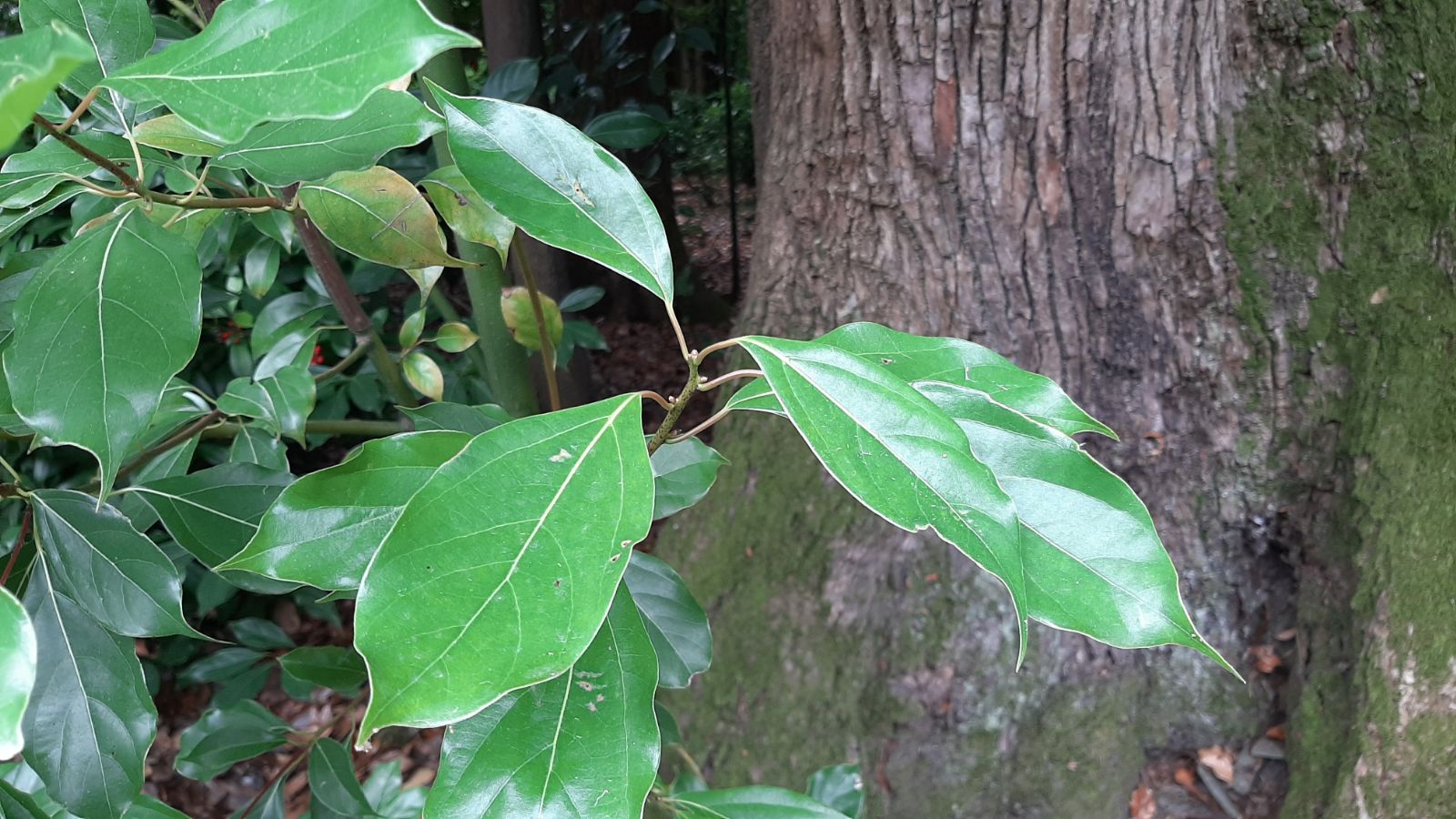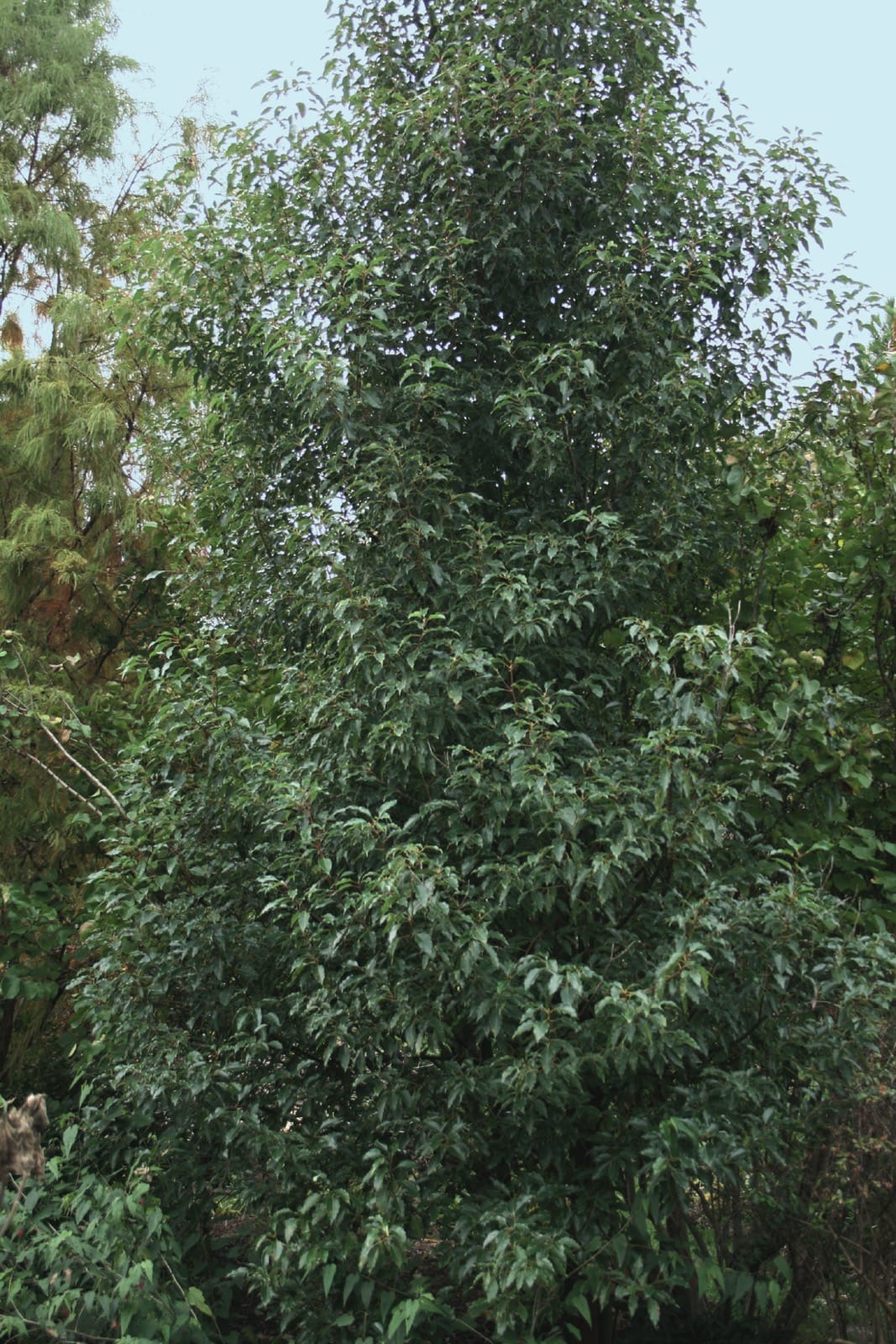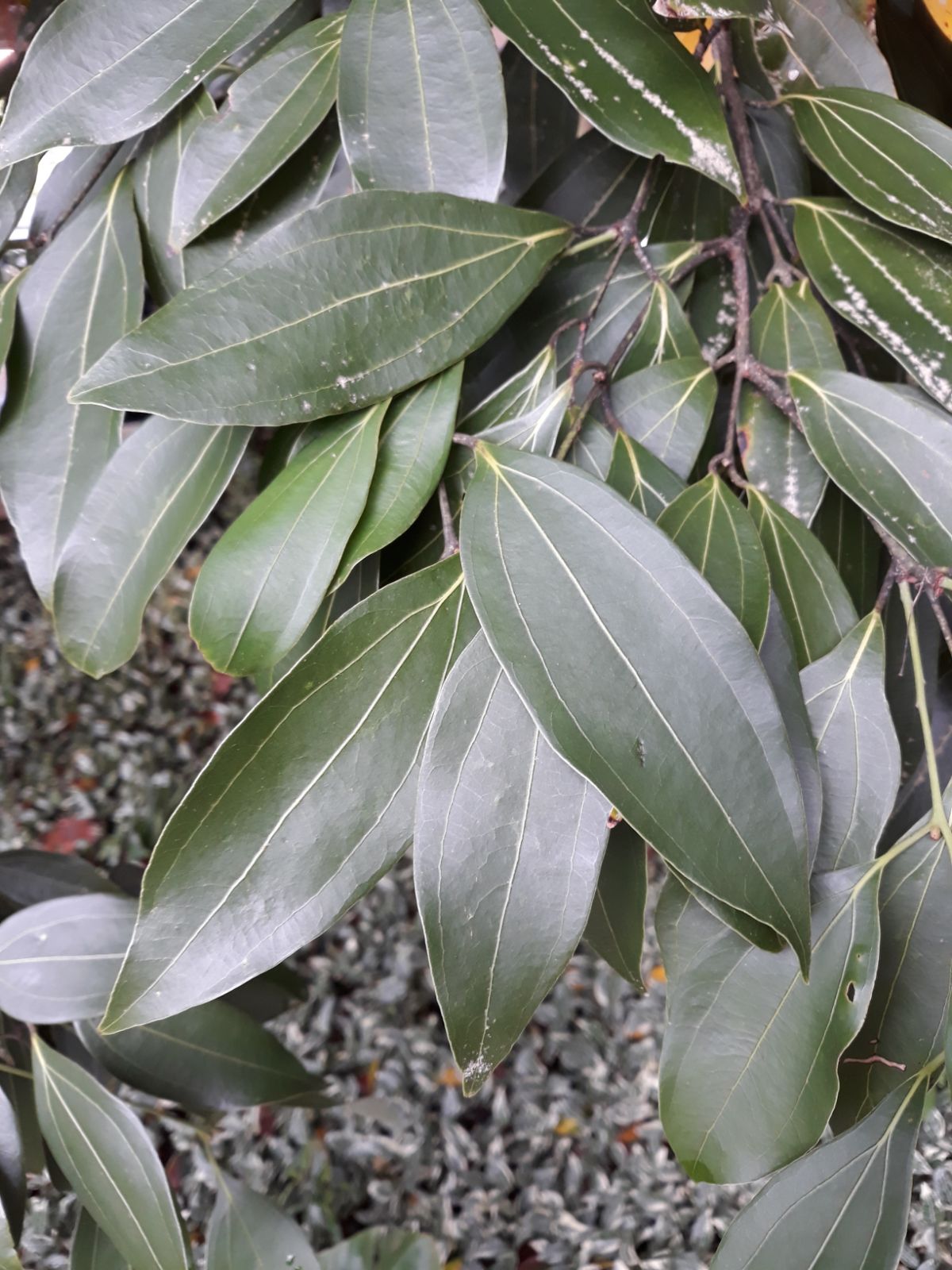Cinnamomum
Credits
Article from Bean's Trees and Shrubs Hardy in the British Isles
Article from New Trees by John Grimshaw & Ross Bayton
Recommended citation
'Cinnamomum' from the website Trees and Shrubs Online (treesandshrubsonline.
Family
- Lauraceae
Common Names
- Cinnamon Trees
- Camphor Trees
According to Rohwer (1993a), Cinnamomum comprises 350 species, most of which occur in tropical and subtropical Asia, Australia and the Pacific; this total also includes approximately 60 species from Central and South America, however, that were formerly included in Phoebe. Cinnamomum species are evergreen trees or shrubs and are often aromatic. The leaves are alternate or opposite and trinerved or triplinerved (rarely pinninerved). The inflorescences are axillary or terminal, paniculate, composed of cymes with one to three hermaphrodite (rarely polygamous) flowers. The flowers are yellow or white, rather small and campanulate. They are 3-merous with equal tepals; there are nine fertile stamens (rarely six) in three whorls and the innermost whorl is glandular; three staminodes are usually present. The fruit is fleshy and is subtended by a small or well-developed cupule (Rohwer 1993a, Liao 1996b, Li et al. 2005).
Cinnamomum is one of the vast and difficult genera of the Lauraceae, a family bedevilled by indistinctness of both genera and species. Cinnamomum is however of particular importance and interest as the source of aromatic products: cinnamon comes from Cinnamomum verum J. Presl, originally native to Sri Lanka and southern India; C. camphora, when distilled, gives the aromatic camphor oil; and several other species yield useful products of lesser importance (Mabberley 1997a). Cinnamomum camphora is probably the best-known species in cultivation in our area, and where conditions are suitable it is capable of making an extremely beautiful tree, as in the famous avenue at Kirstenbosch in Cape Town, for example, or more generally in California. In cooler climates, as in maritime Europe, it is less successful, probably requiring more summer heat than it receives, but if cut back by frost it usually resprouts vigorously (Hogan 2008, Johnson 2007). As such it is worthy of wider planting and experimentation, especially with warming summers. It is probable that several other species will become available for testing in our area. The central Chinese species C. jensenianum Hand.-Mazz. is established at Woodlanders Nursery in South Carolina, for example, and available commercially from there (Woodlanders 2007–2008), and C. tamala (Buch.-Ham.) T. Nees & C.H. Eberm. from the eastern Himalaya and western China is cultivated in the Temperate House at Kew and should be tried outside.
The beauty of Cinnamomum lies in their elegant foliage and the shape of the trees, as the flowers are small and do not provide a ‘show’ – though they can be pleasantly fragrant. All Lauraceae prefer an acidic soil with ample moisture in summer, and in the case of Cinnamomum at least, high temperatures will give the best results, although trees should not be placed in full sun where scorching is a possibility. Frost-hardiness is surprising in the species described, but will be assisted by full ripening of the new growth. All Cinnamomum are able to resprout from basal wood if the top is harmed, and will soon recover from frost damage.
Bean’s Trees and Shrubs
Cinnamomum
A genus of some forty evergreen trees, natives of the warmer parts of E. Asia. In addition to C. camphora other species are of economic importance. The spice cinnamon is made from the shoots of C. zeylanicum, a native of Ceylon but now grown in many tropical regions. An inferior form is made from C. cassia, cultivated in China since the earliest historical times.

